Last Chance to Catch NYC's Holiday Notalgia Train
We met the voices of the NYC subway on our nostalgia ride this weekend!


Architects across New York have embraced Passive House design, a German energy efficiency standard slowly gaining traction in the states. Despite its name, this new approach to building design can be applied to more than just houses. Here in the five boroughs, Passive House Design has already been used to construct large-scale residential projects and a brand-new school. Even though New York boasts the largest affordable Passive House residence in the world, most people might still have no idea what Passive Houses are.
A Passive House designation indicates the highest standard for a building’s energy performance. The name comes from the fact that the building’s energy efficiency is achieved through design and requires little to no intervention once construction is complete. Despite the word “house,” this approach is not limited to residential structures.
A building designed to Passive House standards conceals its efficiency within its facade through reinforcements like triple pane windows and energy recovery ventilators. Those ventilators recycle unused energy that escapes from the building’s envelope. Most of the heavy lifting is seamlessly integrated within the facade, out of sight, out of mind.
New York is the only city where buildings, rather than automobiles, are responsible for the majority of its carbon footprint. Passive Houses are one of many instruments the City hopes to deploy to achieve 100% net zero buildings by 2030.
The “Passive House” term has become a buzzword in sustainable architecture, incorrectly used to describe any project that fits the mold of “energy efficient.” The term risks becoming diluted like other parlance used by sustainable architects too frequently, such as “carbon-neutral” and “net-zero.”
But not anyone can claim their project is a Passive House. The Passive House Institute (PHI), a research group dedicated to promoting Passive House design principles, sets universal standards. Andreas Benzing, President of PHI’s New York Chapter, explained the five basic tenets of Passive Houses to Untapped New York: space heating demand, space cooling demand, primary energy demand, airtightness, and thermal comfort. The evaluation criteria boils down to three metrics: heating/cooling demand, airtightness, and an EUI number. The EUI number represents the building’s energy use per square foot. The PHI verifies these metrics with the “blower door test,” which essentially measures how much air escapes from the building’s envelope. By achieving these benchmarks, the PHI estimates a building can reduce energy emissions from 75 to 90% compared to a typical structure.
Unlike the LEED certification in which architects are presented with a “menu” of materials and typologies to choose from, Passive House design is purely interested in the building’s performance; it doesn’t care about the path to get there. For architects, this can be a godsend, as it allows for more flexibility and leeway in achieving efficiency standards.
There is plenty of overlap between buildings that are both LEED-certified and Passive House Designs. These projects have met their sustainability targets in both their means—measured by LEED development guidelines—and their ends—measured by Passive House energy compliance.
In meeting these benchmarks, energy consultants have become invaluable to New York’s development process. The Passive House Institute has been an active syndicator for these consultants, along with architects and developers, essentially acting as a think tank for how to move the industry forward. In a highly competitive real estate market like New York’s, Passive House Design is unique in this respect; it encourages competing architects to be more collaborative and transparent in their design process. The flexibility in meeting Passive House requirements allows architects to imbue projects with their own flair.
Invented in Berlin, “passivhaus” design started in New York on smaller-scale projects, like retrofitting Brooklyn brownstones. A 19th-century Park Slope brownstone, 23 Park Place, became New York’s first certified Passive House in 2012 after a renovation led by architect Julie Torres Moskovitz. Now, these projects are scattered throughout the city, running the gamut between public buildings, condominiums, and high rises. Some notable projects include St. Luke’s Place in the Village and Chestnut Commons, an affordable housing complex in East New York.
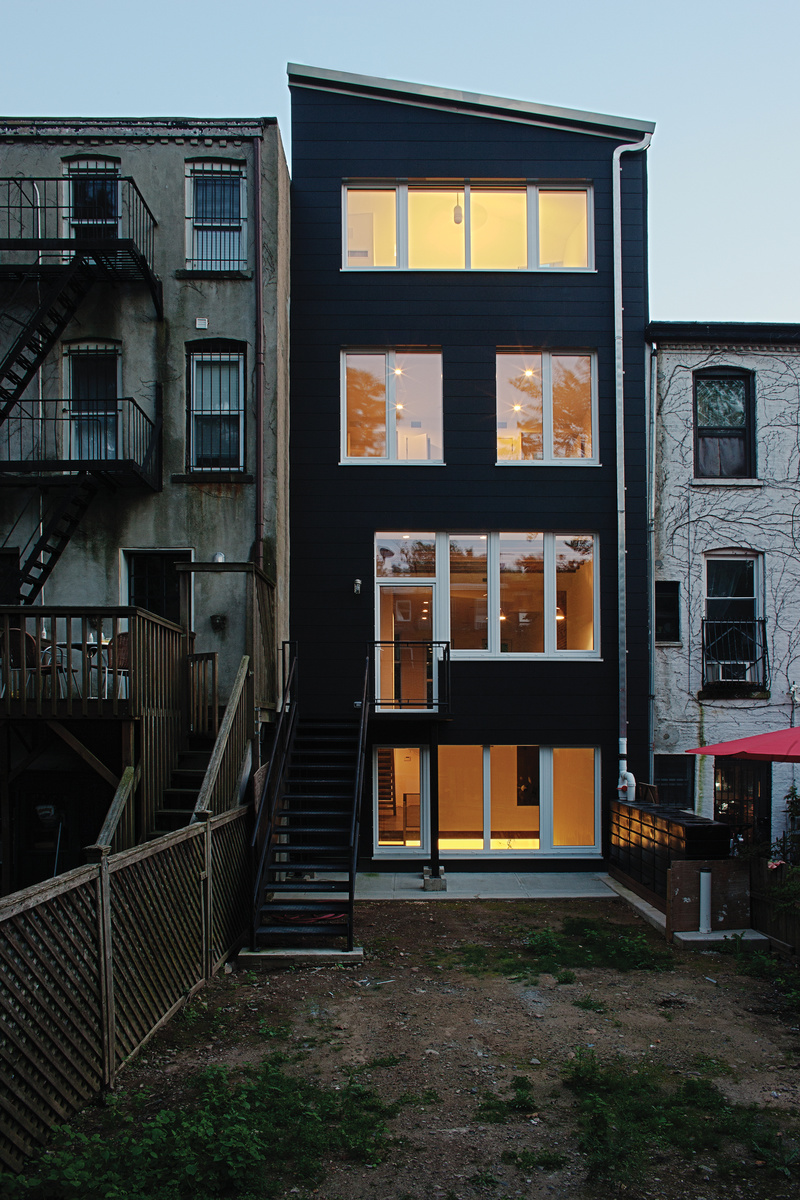
The city of New York’s Housing and Preservation Development Department (HPD) has embraced Passive House design, hoping to extend its quality of life improvements to low-income tenants. In East Harlem, for example, HPD issued a Request for Proposal soliciting affordable housing projects that complied with Passive House standards. The city incentivized Passive House development by providing a Floor Area Bonus, which allows developers to build more densely than zoning codes permit. The team from L&M Development undertook this challenge, in partnership with Handel Architects, a pioneer in New York’s Passive House market. The Sendero Verde development, the largest affordable Passive House in the world, brought 709 affordable housing units and a community garden to East Harlem.
Louis Koehl of Handel Architects told Untapped New York why Passive Houses are so amenable to affordable housing projects: “They achieve [energy efficiency] with really robust facades and really high-performing windows, and that works pretty well in an affordable housing scene. You want to reduce energy costs for folks. People are less concerned about having floor-to-ceiling glass and more concerned about having thermal comfort and resiliency.”
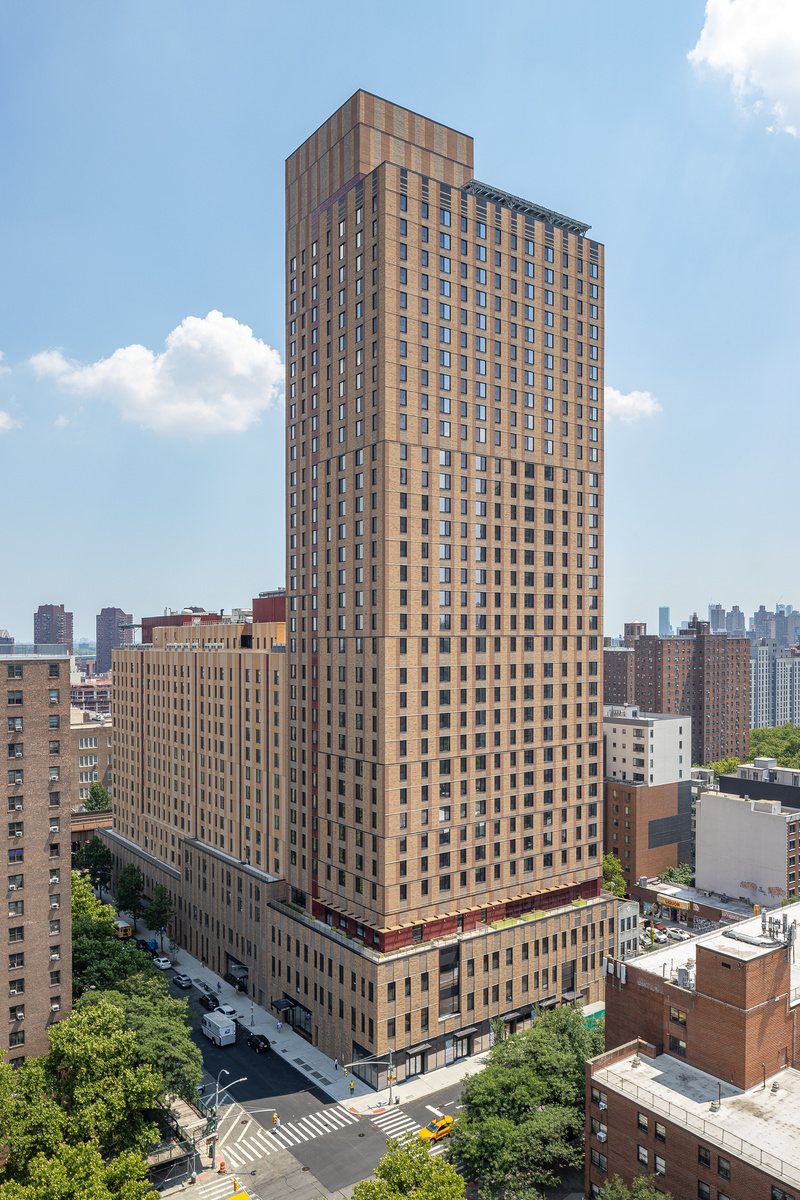
The City of New York has already instituted its own energy efficiency system which requires buildings to publish their energy grade. But Benzing scoffed at the Benchmarking Law’s rating system, which grades buildings on a curve relative to the rest of the market. Benzing, who started his career in Berlin and studied at the prestigious Bauhaus School of Design, says he is “irritated” by New York’s energy standards. “Achieving an A rating in New York is a fairly low bar as far as energy standards go,” he told Untapped New York. He hopes that the adoption of Passive House standards will motivate the City of New York to upgrade its own energy standards.
Given the longevity of Passive House efficiency, structures that meet PH criteria are especially effective at meeting the city’s annual benchmarks. Koehl explains: “We’ve modeled [Passive Houses] so that you’ll be code-compliant all the way through 2035.” This foresight is another way the efficiency of Passive Houses remains out of sight, out of mind.
Back in 2002, the city issued a Request for Proposal, calling for universities to submit renderings for a new campus on Roosevelt Island. The island would become a laboratory for sustainable design.
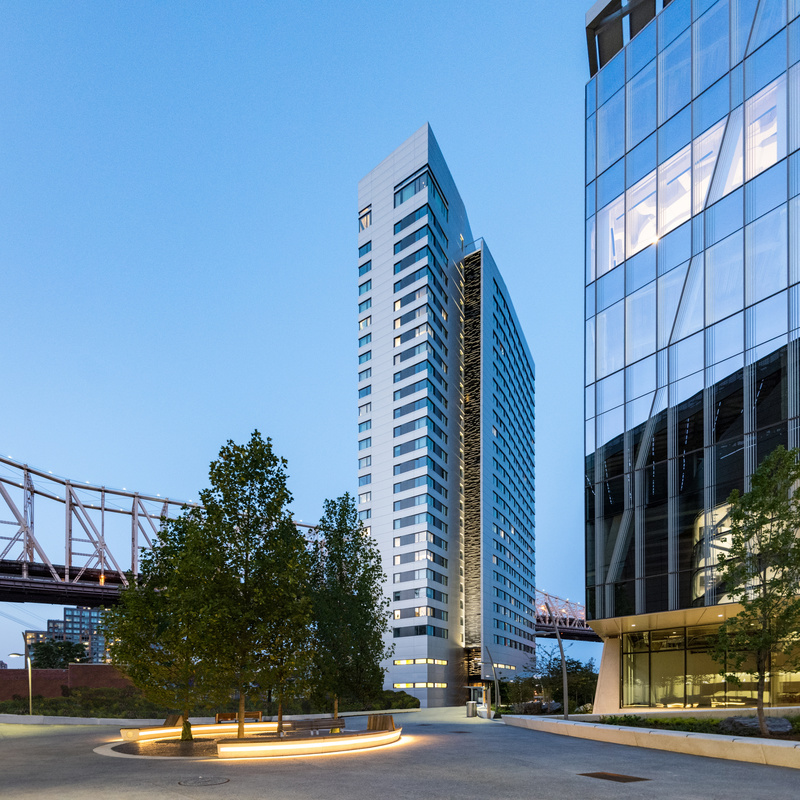
When Cornell University secured the bid, the school announced it would build the world’s tallest Passive House structure, a student housing complex designed by Handel Architects. The “House at Cornell Tech” provides 2.1 million square feet of housing for students and faculty. The exterior is sealed by a “thermally insulated blanket,” essentially acting as a breathing apparatus with “gills.” The building saves an estimated 882 tons of carbon dioxide per year, making it one of the most sustainable projects in the world.
The Passive House design method has now transcended its residential origins and made its way into the nation’s largest public school system. PS 456 in Boerum Hill—which opened for its inaugural class on September 5th, 2024—is now the first public school in the city to comply with Passive House standards.
New York’s public schools have come a long way since the pandemic, recovering from plummeting enrollment numbers and city-wide budget cuts. While the Department of Education (DOE) is still in a state of convalescence, it used this time to reimagine its future. PS 456 in Boerum Hill offers a snapshot of what that future may look like.
PS 456’s exterior resembles the brick facade quintessential to Brooklyn public schools. The school’s interior is spacious and filled with natural light. An expansive floor plan features multiple gyms and an outdoor soccer field that overlooks the Brooklyn skyline. The building is also equipped with triple-pane windows, a green roof, and energy-recovery ventilators.
Walking through the hallways, it’s hard to believe the school sits on Flatbush Avenue, the busiest corridor in the city’s most populous borough. That was Alloy’s motivation behind its Passive House design; it insulates students from noise, pollution, and potential intruders. During a site visit of the property, Jared Della Valle, the project’s principal developer, explained that the building is configured to safeguard against the threat of a school shooter. This disquiets the tour, as if coming to terms with this harsh reality.
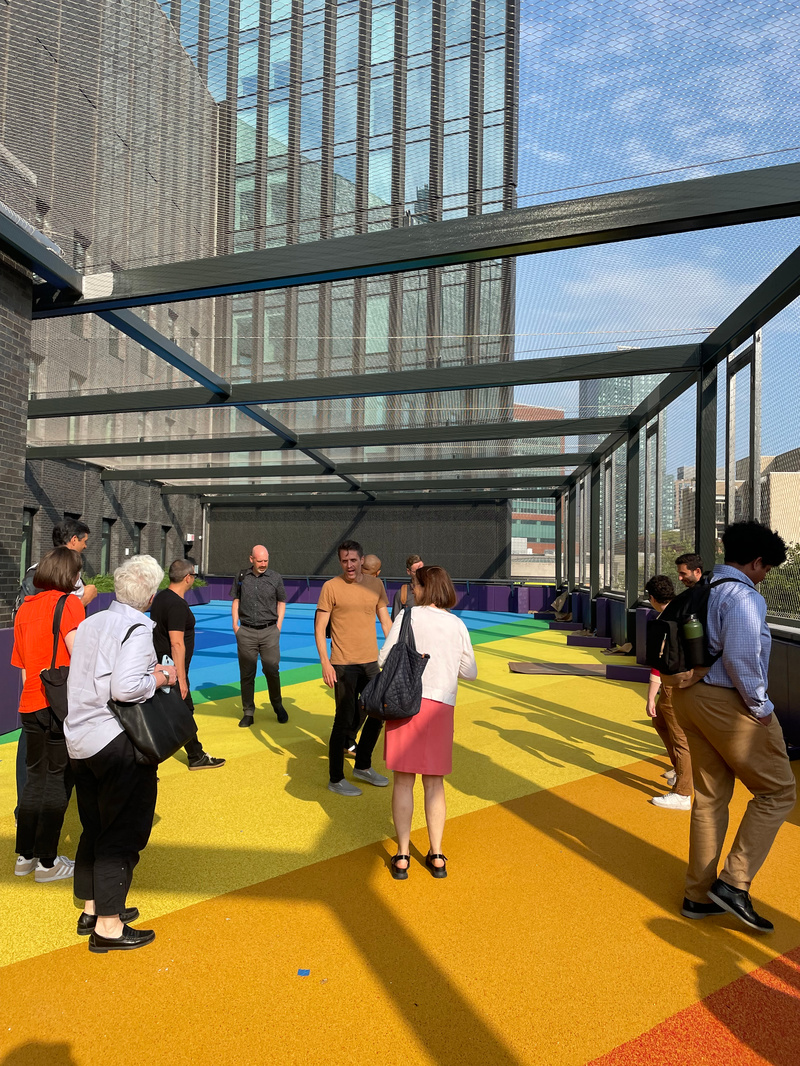
Elementary school students may be ambivalent about their school’s Passive House distinction, but that’s the point. At an assembly on opening day, according to Alloy vice president David McCarty, an unnamed faculty member preached to the students: “You go to the best public school in New York City. There’s no excuse anymore.”
The elementary school will share space with the renovated KhalIi Gibran International Academy, a high school devoted to students of Arabic descent. The school was funded by the Educational Construction Fund, a branch of the DOE that leverages public-private partnerships to build public schools. This allowed the team from Alloy to circumvent the DOE’s stringent building codes, in order to achieve Passive House certification. The school building sits within the Alloy Block, a grouping of five structures in Downtown Brooklyn—both new and historic—that will serve as residences, retail, and educational spaces.
PS456 is part of the groundbreaking Alloy Block project, one of the city’s newest projects to involve Passive House Design. As the neighborhood gradually becomes more residential, it has become an incubator for sustainable architecture. To accommodate incoming residents, the city is scrambling to upgrade the borough’s amenities, like parks, schools, and libraries. New York’s Economic Development Corporation (NYCEDC) and the Downtown Brooklyn Partnership (DBP) cut the ribbon for Abolitionist Place earlier this year, a new park dedicated to 19th-century Brooklynites who fought to end slavery. The neighborhood’s public school system is playing catch up as well, with Alloy Elementary and Albee Square Montessori, the first public Montessori school in Downtown Brooklyn.
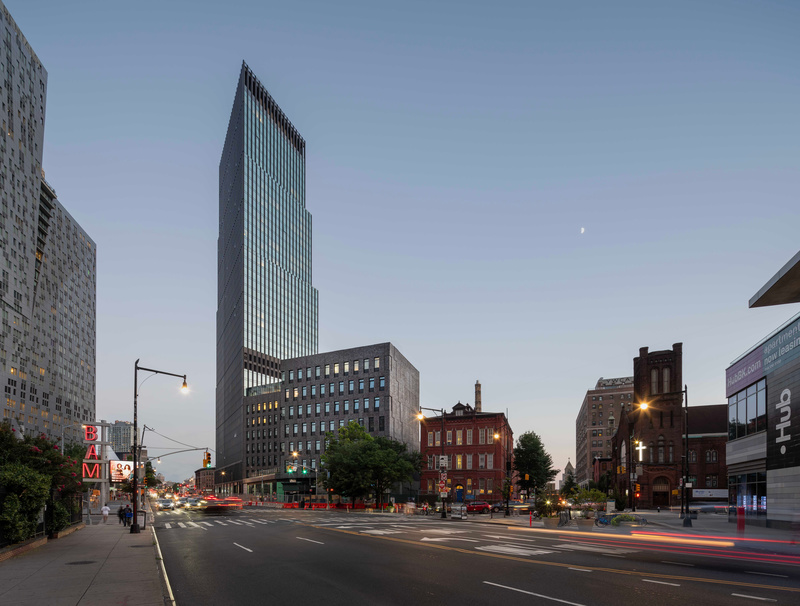
The Alloy Block was part of a rezoning initiative known as 80 Flatbush, which renovated the parcel’s existing brownstones to reflect Downtown Brooklyn’s high-density cityscape. The block sits directly across from the Brooklyn Arts Museum (BAM) on Flatbush Avenue.
Jared Della Valle currently sits as the chair of the Downtown Brooklyn Partnership‘s board of directors, replacing Jelena Kovačević, the dean of NYU’s Tandem School of Engineering. His promotion indicates how integral the project will be in reshaping Downtown Brooklyn.
The first phase of the project includes the construction of a tower with 395 market-rate homes and 45 affordable units, along with 33,000 square feet of retail space along the Flatbush corridor. The building is the city’s first all-electric skyscraper. As the state’s all-electric building law goes into effect in 2026 for all buildings taller than seven stories, many developers are looking to the Alloy Block as inspiration. The project was instrumental in justifying the law’s feasibility and providing “proof of concept” for the city’s vision.
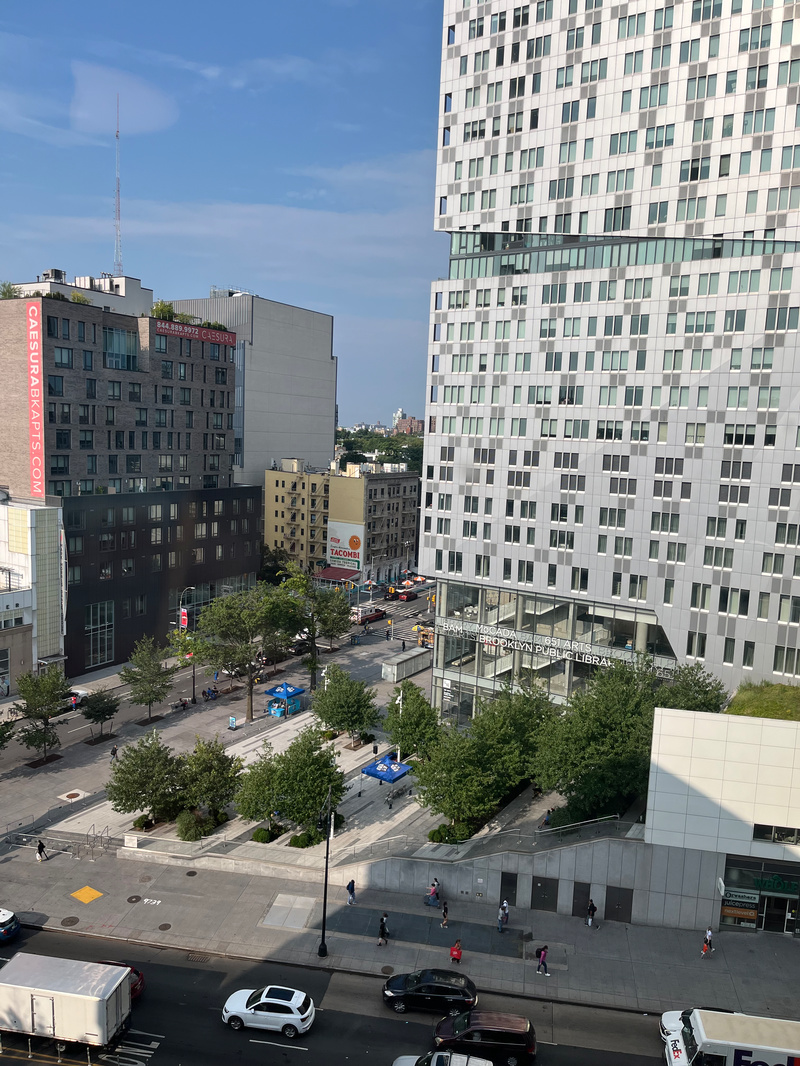
Not everyone has embraced the pivot to Passive House Design. The style has become synonymous with “green gentrification.” In the Showtime series The Curse, the show brilliantly satires the absurdities of the design method, showing everything that could go wrong. Nathan Fielder and Emma Stone play self-important architects determined to bring Passive House homes to Espanola, an impoverished community in New Mexico.
While intended to be facetious, the show does touch on some of the design method’s downsides. To the dismay of Espanolas environmental groups in the series, the house’s mirror-like facade begins to threaten the local bird populations. At one point, Emma Stone’s character remarks to a prospective buyer that the houses are so insulated they resemble a prison cell.
The design method is still in its trial and error stage, ironing out its kinks. It has seen mixed results in its reception by residents. There are legitimate calls for concern. Some concerns are design-related such as fears that the humidity produced by the air filtration system can cause mold, while others are economic, some fear that Passive House and affordability are mutually exclusive.
Proponents like Benzing believe the gentrification concerns are unfounded. The New York State Research and Development Authority (NYSERDA) has begun to provide more financing opportunities for grants for Passive House projects. Architects are gradually finding more scale—and thus more affordability—in the design method.
Passive Houses effectively share the same motto as Sherman McCoy, the protagonist in Bonfire of the Vanities: “Insulate, insulate, insulate.” But some arguments reject the notion that a home could—or should—be insulated from the community. Passive Houses have proliferated at the same time as “porous” architecture, like the Pink Building in Fort Greene. But the two seem to occupy entirely different markets. Their loyal camps differ not only on design preferences but also have radically different stances on how to compartmentalize public and private space.
Projects like the Pink Building strive to ensure a connective tissue between the inside and outside of the building. Passive Houses essentially do the opposite. Their job is to widen the gap—quite literally—and create a buffer between the structure and outside elements.
The argument that The Curse makes is that this gap is not only physical but symbolic. In their heavily insulated exteriors, Passive Houses allow residents to live in a bubble, sequestered from the communities they inhabit.
In a results-driven industry like architecture, Passive Houses like the Alloy Block project offer an alternative barometer to success, beyond the project’s return on investment (ROI). It also ensures that the energy efficiency problem is addressed upfront, so schools can be less preoccupied with mitigating energy expenses and more concerned with meeting the needs of their students.
PS 456 is only the first public school to make this leap and it certainly won’t be the last. In decarbonizing buildings across the city, energy efficiency will no longer be a luxury but a necessity. The Alloy Block is ahead of the curb, anticipating a broader application of Passive Houses, which could revolutionize schools, hospitals, and even airports.
Gone are the days when sustainability is taken at the word of a civil engineer. Nor will sustainable architecture be a luxury reserved for upscale projects. Passive Houses are a gateway to bringing sustainability to the mass market. It is a step towards ensuring sustainable living as a human right.
Next, check out 10 Innovative Eco-Friendly Sites in NYC
Subscribe to our newsletter